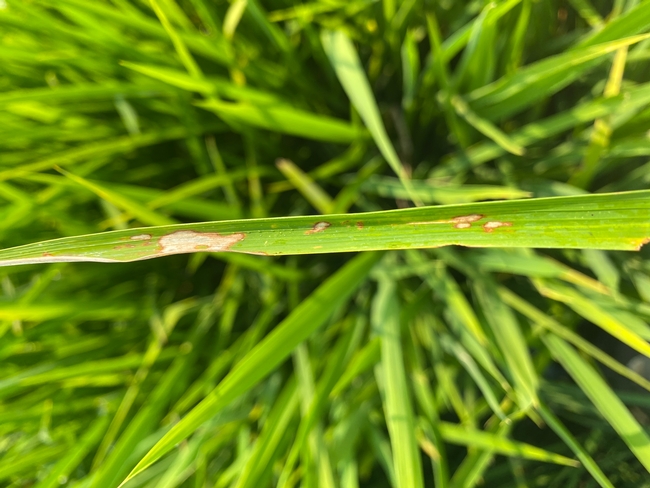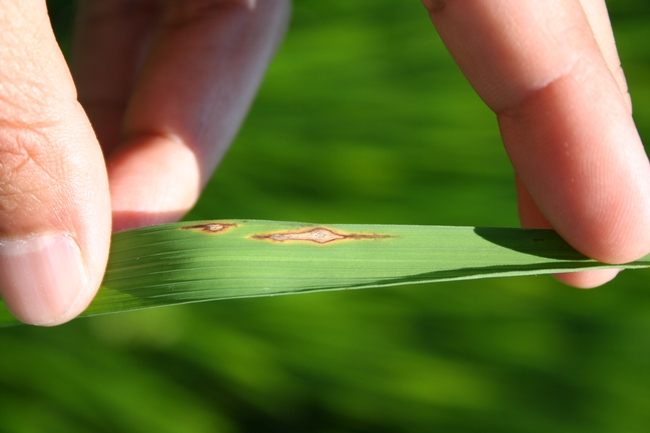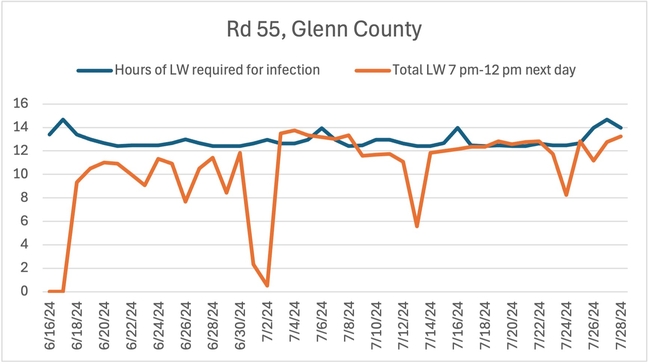- Author: Taiyu Guan
Date: September 4, 2024
Location: Rice Experiment Station
(955ButteCity Hwy., Biggs, CA)
** Registration and Waiver of Liability Required! **
** Registration Link: Rice Pest Management Course Registration 2024 **
Meeting Agenda:
|
7:30-8:00 am |
Check-in at Hamilton Road Field |
|
8:00-8:10 am |
Introduction - WhitneyBrim-DeForest, UCCE |
|
8:10-9:40 am |
Tour of rice field research plots - Deniz Inci, Saul Estrada, Michael Lynch, UC Davis |
|
9:40-10:00 am |
Travel from Hamilton Road Field to Rice Experiment Station Morning Break |
|
10:00-11:00 am |
Breakout Sessions:
|
|
11:00-11:30 am |
Pest Identification Quiz - Whitney Brim-DeForest, UCCE |
|
11:30-12:15 pm |
Light Lunch |
|
12:15-12:30 pm |
Integrated management of rice diseases - Luis Espino, UCCE |
|
12:30-12:45 pm |
Pesticide laws, regulations, and permit conditions - Craig Riddle, CA Rice Commission |
|
12:45-1:00 pm |
Integrated management of rice invertebrates - Ian Grettenberger, UC Davis |
|
1:00-1:15 pm |
Algae and Nostoc management - Jens Beets, USDA |
|
1:15-1:30 pm |
Afternoon Break |
|
1:30-1:45 pm |
Common rice permit condition violations - Louie Mendoza, Butte County Ag Commissioner |
|
1:45-2:00 pm |
New rice herbicides to manage herbicide-resistant weeds in CA - Deniz Inci, UC Davis |
|
2:00-2:15 pm |
Emerging weeds - Sarah Marsh, UCCE |
|
2:15-2:30 pm |
Watergrass management and double propanil alternatives - Whitney Brim-DeForest, UCCE |
|
2:30-2:45 pm |
Evaluation and Wrap-up |
2024 Rice Pest Management Course Agenda.docx
Waiver of Liability
- Author: Luis A Espino
In the last two weeks, I visited a couple of fields suspected of having blast. After looking at the symptoms and the distribution of the lesions in the field, we determined that the injury we were observing was most likely due to herbicide burn. When blast lesions coalesce, they can look a lot like herbicide burn, but with blast you will find some of the typical diamond shape lesions. Also, when blast results in burned holes, you will find a lot of blast lesions around the hole that decrease in density as you move away from the hole.
|
Herbicide burn that can be confused with blast |
Typical blast diamond shaped lesions |
I have not seen blast lesions this year yet. Looking at leaf wetness and temperature at the field level, we had some good conditions for blast around July 20. This is only an approximation and does not necessarily mean that we will see blast. Remember that two more things are needed to see infections: a susceptible host and the pathogen. Most of our varieties are susceptible, with only M-210 being resistant. At this point we do not have a way to monitor for the presence of the pathogen in the Valley other than by detecting infected fields.
Hours of leaf wetness (LW) required for infection (blue line) and total hours of leaf wetness (orage line). When the orange line intercepts or is higher than the blue, there is enough hours of leaf wetness for blast infection.
I'll keep monitoring and let you know if I see blast in the field.
- Editor: Taiyu Guan
Date: August 14, 2024
Location: Corner of Tule Rd & Lodi Rd, Colusa, CA
(39°00'44.3"N 121°55'54.1"W)
No Registration Required!
Meeting Agenda:
9:30 am Registration
10:00 am Welcome and Introductions
Whitney Brim-DeForest, UCCE Rice Advisor
10:10 am Hedgerow Demonstration Project Overview
Whitney Brim-DeForest, UCCE Rice Advisor
10:25 am Weed Management in Hedgerows
Rachael Long, UCCE Emeritus Advisor;
Mandeep Riar, UCCE Restoration Ecology and Weed Science Area Advisor
10:45 am CDFA's HSP & SWEEP Update
Heather Montgomery, CES Healthy Soils
10:55 am Hedgerow Plant Selection
Sarah Marsh, UCCE Rice Advisor
11:15 am Hedgerows in Annual Crops
Jennifer Sanders, Wallace Brothers
11:30 am Discussion & viewing of Demonstration Area
Whitney Brim-DeForest, UCCE Rice Advisor;
George and Carson Tibbitts, Lodi Ranch
Thank you for your participation!
**1.0 CCA Credits Available**
Hedgerows in Rice Field Demonstration Day Agenda
- Author: Sarah Marsh
- Editor: Taiyu Guan
- Editor: Consuelo B Baez Vega
We have had some interesting calls lately concerning issues we do not usually see in the fields. We have received calls about small circular areas with “snipped” rice in fields west of I-5.
As we stood at the edge of the field, a quiet rustle alerted us. We spotted a small, brown rodent slipping into the field, likely a Norway rat based on the length of the hairless tail, which was shorter than the length of the rodent's body.
The Norway rat is probably the most serious vertebrate pest of rice and it can feed throughout the season, from seedling stage to ripening grain. However, we have not seen a large amount of damage from these rodents, indicating that the level of infestation is not high enough to warrant treatment.
Bait boxes, zinc phosphide, and aluminum phosphine tablets are options for control (2024); however, there are additional requirements for these besides an applicator license or certificate. Zinc phosphide and aluminum phosphine are CA Restricted Materials and an additional Burrowing Vertebrate Fumigation qualification is required for aluminum phosphine use. If conditions suggest that rodenticide is the best option, the rodenticide and application method should be chosen with regard for potential non-target hazards. Consult your Agricultural Commissioner for specific information.
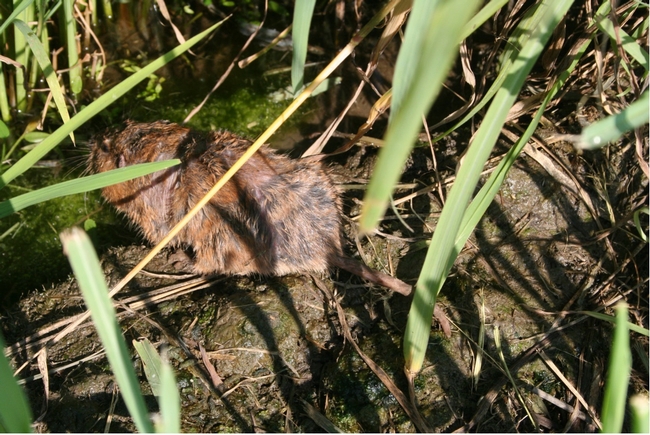
- Author: Luis Espino
I have been hearing rumbles about grasshoppers in the Valley, mostly in grasslands. I visited a rice field last week with high grasshopper populations. Most of the grasshoppers were near field borders at a density of about 2-3 per square yard in the most dense areas. The grasshoppers had cause some defoliation, but not enough to cause any economic damage. The field was in the late boot stage, with some panicles already emerged from the boot. There was some panicle injury that looked just like armyworm injury, but there were no armwyorms in the field. Most likely, the grasshoppers caused this injury.
The grasshoppers in rice are about 1.5 inches long. They are easily disturbed and can be seen flying out as one moves through the rice. If you see grasshoppers, keep an eye on the population. In general, a treatment for grasshoppers is not recommended unless their population is high and they injure panicles.
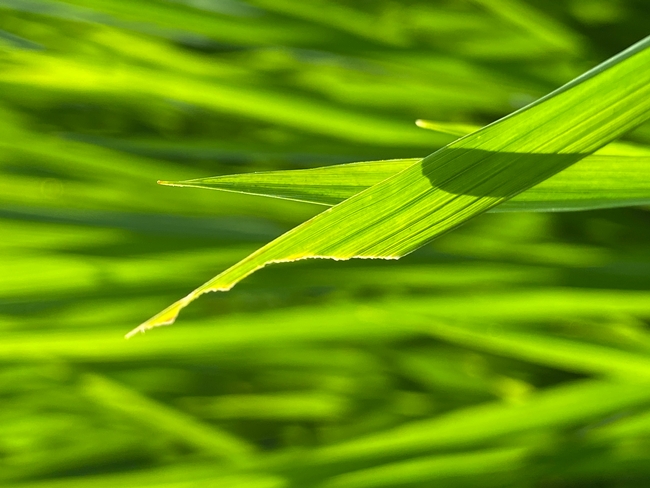 |
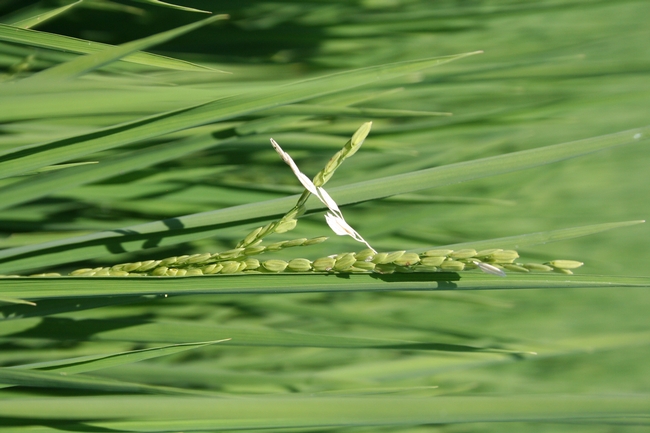 |
Defoliation and panicle injury caused by grasshoppers.
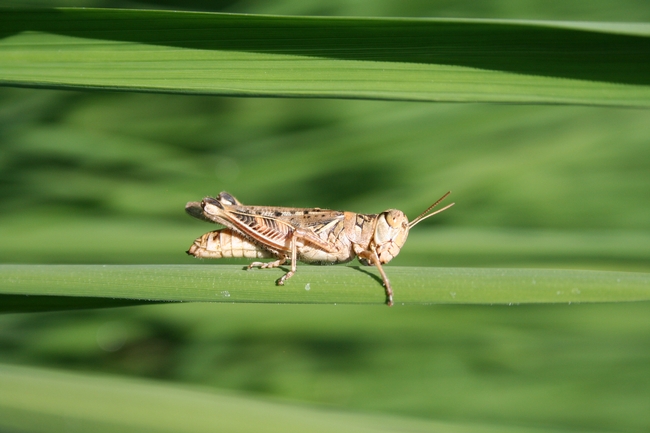 |
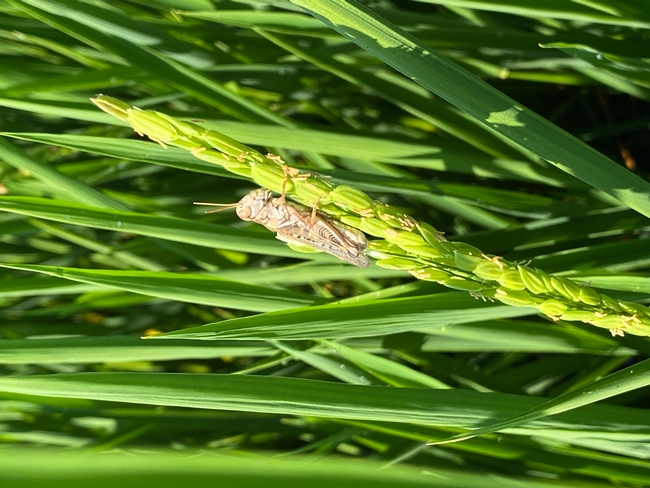 |
Grasshoppers in rice.


